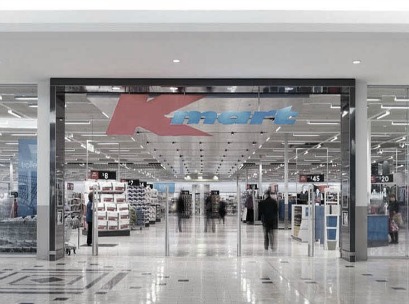We’ve all done it before – walked into Kmart to buy some batteries and walk out 45 minutes later with a variety of fake indoor plants in concrete pots and copper coloured wire baskets. Kmart’s transformation to Australia’s leading department store and market darling under the leadership of Guy Russo, has been nothing short of remarkable. In just under 10 years, Kmart has gone from the brink of bankruptcy to $470m EBIT in 2016. More importantly, Kmart has reimagined the concept of “chea
p” to now be fashionable, on-trend merchandise, desired by an even wider customer population than it previously targeted.
A tall poppy in a struggling market
Department store retailing in Australia is a struggling market. Competition from online retailers offering a wider selection and competitive pricing has meant that some of the largest players, Target, Big W and Myer have been going backwards – in the case of Big W and Target, the downward spiral shows no improvement. Kmart, on the other hand has gone from strength to strength and over the last eight years has averaged a staggering compound growth rate (CAGR) of 120 per cent. So how did they do it?
Chart 1: Earnings Before Interest and Tax (EBIT) (A$m)
Rebranding ‘cheap’
Underpinning Kmart’s transformation has been an overhaul of it’s branding and customer proposition. Importantly, a re-brand is not simply a logo or a catchy new phrase – as Kmart have shown – a rebrand must drive organisational wide changes to be truly effective.
It started with Kmart aiming for a proposition that would make it’s customers feel pride rather than wearing the burden of having to shop at a discount store due to a lack of means. Sounds simple enough, but this proposition not only re-branded Kmart, but it also re-branded to concept of ‘buying cheap’. They removed any sort of taboo associated with shopping in a store with low prices.
From here, this new customer proposition needed support from four areas in the business to realise the change:
Pricing: Kmart moved from being a ‘discount store’ to being Everyday Low Prices (EDLP). A nuanced change, but it was critical in changing customer perceptions of Kmart. Now Kmart has an average single sale price of only $7 and you will be hard-pressed to find an item stocked that’s priced more than $10.
Sourcing and Stock: However implementing an EDLP pricing strategy without hurting profitability requires looking at your sourcing model and stock levels. Kmart transitioned to a direct sourcing model and empowered buyers to seek out on-trend merchandise direct from suppliers. Kmart’s razor-like focus on what customers want and matching this with enticing prices, has created a legion of #kmartlover fans who simply cannot leave Kmart without getting the latest home interior item. Further better products didn’t necessarily mean more of it – Kmart’s instore selection also dropped from 120,000 products to just 50,000.
In Store Experience: Aisles were then cleaned up, widened and bargain bins removed. Now when you enter a Kmart, what first strikes you is how light, logical and neat it is. Compare this with a Target store, which you’ll often find has untidy bins of miscellaneous products scattered in the middle of aisles and low cost items seeming sporadically placed next to ‘Danni Minogue’ Petite higher priced items.
Logistics: To have an average single sale price of only $7, the supply chain needed to support higher volumes. So Kmart introduced a lean methodology in its processes including picking and packing with smaller carton sizes to lower shipping costs.
Now it’s Big W and Targets turn – but can they do it?
So if a re-brand of Kmart worked, why can’t Target and Big W just do the same thing? It’s possible that Target and Big W are acting on the re-brand without the clear customer proposition and operational excellence within the business that is needed to support this. For example, Big W’s latest TV ads focus on the company’s fashion selection and low prices (following a similar look to Kmart) – however instore it’s difficult not to be bewildered by the fact that you can purchase a $6 t-shirt and up to a $700 Dyson vacuum cleaner. This sort of price spread automatically indicates to a lay shopper that sourcing might not be as competitive as it could be, thus this product might not be as cheap as it could be.
Both Big W and Target are dwindling in with negative EBIT in the last financial year – exactly where Kmart was in 2008. Their primary focus will no doubt be about remaining profitable. From there only will things like rebranding and operational excellence be considered. It will be interesting to watch Kmart’s next move – whether its existing model and brand loyalty can sustain the growth the business and investors are used to.
Arani Satgunaseelan is a principal consultant at ADP & Co, a management consultancy specialising in strategy and analytics for the retail sector. Arani can be contacted at arani@adpandco.com.
Access exclusive analysis, locked news and reports with Inside Retail Weekly. Subscribe today and get our premium print publication delivered to your door every week.

